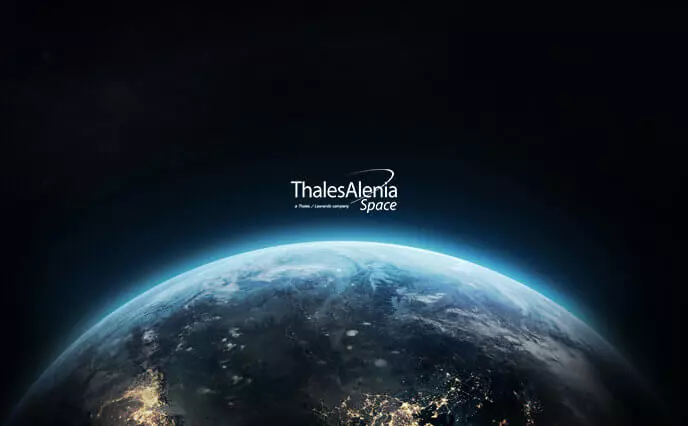Press releases
Discovering the mysteries of gravitational waves and black holes

Thales Alenia Space wins ESA study contract for LISA mission to investigate the history of Universe
Cannes, June 4th 2018 - Thales Alenia Space, the joint venture between Thales (67%) and Leonardo (33%), announced today that it has won a contract from the European Space Agency (ESA) for the Phase A study of LISA (Laser Interferometer Space Antenna), the third “large-class” mission in ESA's Cosmic Vision 2015-25 Program.
LISA will be the first space-based gravitational wave observatory. Its major aim is the detection of gravitational waves, ripples in the fabric of space-time created by large and dense celestial bodies with very strong gravity – such as black holes – that move with accelerated motion, as predicted by Albert Einstein's theory of general relativity. The mission will give scientists a completely new view of the cosmos compared with traditional observation techniques, and will hopefully help unveil some of its many mysteries.
LISA will consist of three spacecraft in a triangular formation, separated by 2.5 million kilometers, following the Earth in its orbit around the Sun. Each satellite will carry two reference masses. Laser beams will be transmitted between satellites to measure the displacement of these masses with a resolution ten times smaller than an atom. Thales Alenia Space will lead the feasibility study phase ending in January 2020. This contract marks a major step forward for the LISA mission and also confirms Thales Alenia Space’s traditional key role in many of Europe’s leading scientific missions.
Technical details
Phase A includes the identification of a feasible mission design, the definition of a baseline for the spacecraft and its subsystems, including payload interfaces, the evaluation of achievable science based on extensive analyses, and the definition of a development road map.
LISA (Laser Interferometer Space Antenna) will use the same technique as two other programs, LIGO (Laser Interferometer Gravitational-Wave Observatory) and Virgo (European Gravitational Observatory), to detect gravitational waves, namely measuring the displacement of reference masses using laser interferometry. But it will extend the observation envelope in the lower frequency spectrum, inaccessible from the ground, and considerably enhance capabilities and verification.
About Thales Alenia Space
Combining 40 years of experience and a unique diversity of expertise, talents and cultures, Thales Alenia Space architects design and deliver high technology solutions for telecommunications, navigation, Earth observation, environmental management, exploration, science and orbital infrastructures. Governments, institutions and companies rely on Thales Alenia Space to design, operate and deliver satellite-based systems that help them position and connect anyone or anything, everywhere, help observe our planet, help optimize the use of our planet's – and our solar system’s – resources. Thales Alenia Space believes in space as humankind’s new horizon, which will enable to build a better, more sustainable life on Earth. A joint venture between Thales (67%) and Leonardo (33%), Thales Alenia Space also teams up with Telespazio to form the parent companies’ Space Alliance, which offers a complete range of services and solutions. Thales Alenia Space posted consolidated revenues of about 2.6 billion euros in 2017 and has 7,980 employees in nine countries. www.thalesaleniaspace.com
Thales Alenia Space – Press Contacts:
Sandrine Bielecki
Phone: +33 (0)4 92 92 70 94
sandrine.bielecki@thalesaleniaspace.com
Chrystelle Dugimont
Phone: +33 (0)4 92 92 74 06
chrystelle.dugimont@thalesaleniaspace.com
CinziaMarcanio
Tel: +39 06 41512685
cinzia.marcanio@thalesaleniaspace.com

